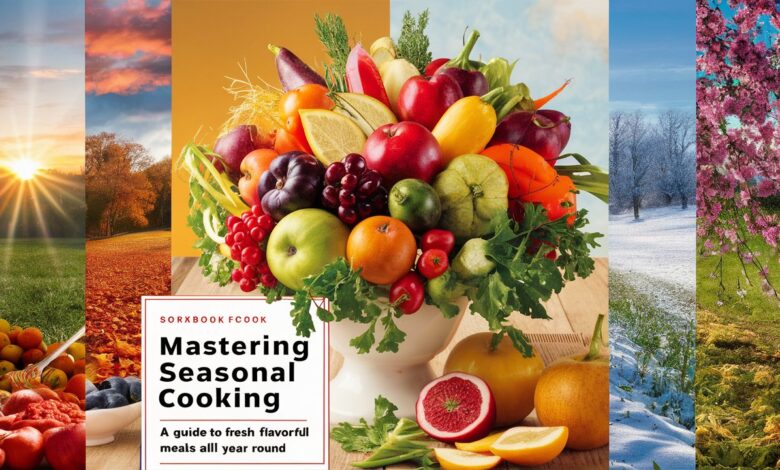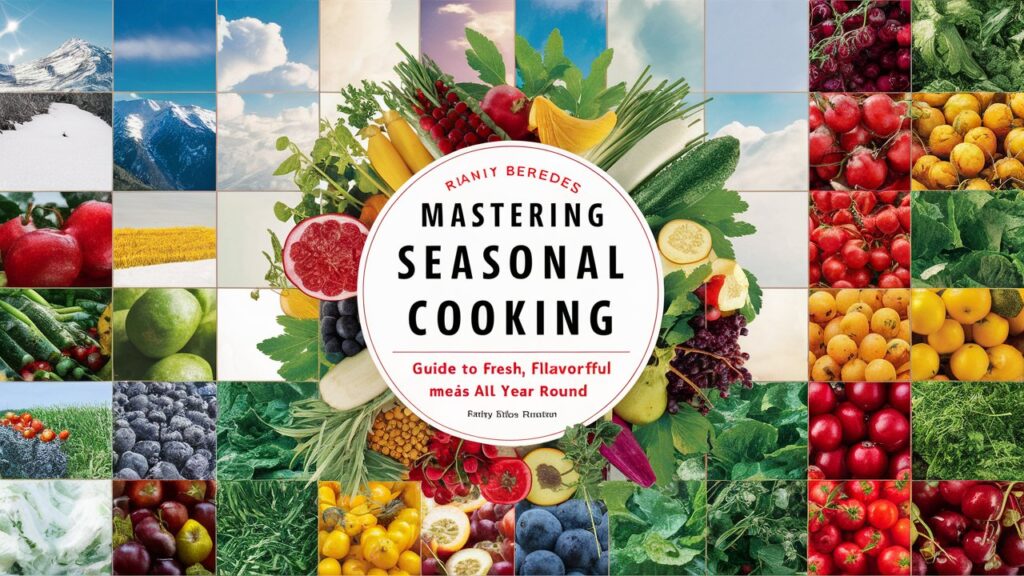Mastering Seasonal Cooking: A Guide to Fresh Flavorful Meals All Year Round

Introduction
In a world dominated by convenience foods and year-round produce, seasonal cooking stands out as a celebration of nature’s rhythms. At The Weekly Spoon, we believe that aligning your meals with the seasons isn’t just a trend—it’s a transformative way to enhance flavor, nutrition, and sustainability. Whether you’re a home cook or a culinary enthusiast, understanding how to harness the power of seasonal ingredients can elevate your dishes from ordinary to extraordinary. This article dives into the art of seasonal cooking, offering practical tips, recipe ideas, and answers to common questions. Let’s explore how to make the most of nature’s bounty, one season at a time.
1. The Benefits of Seasonal Cooking
Seasonal cooking revolves around using ingredients that are naturally harvested during specific times of the year. This practice isn’t just about freshness; it’s a holistic approach to eating that connects you with local agriculture and reduces your carbon footprint. Fruits and vegetables picked at peak ripeness boast superior flavor and higher nutrient density compared to their off-season counterparts, which often travel long distances and lose vitality in transit. Economically, seasonal produce is often cheaper due to abundant supply, making it a budget-friendly choice. Environmentally, it supports sustainable farming practices by reducing reliance on artificial growing conditions and long-haul transportation.
2. How to Source Seasonal Ingredients
Locating seasonal ingredients requires a blend of research and intuition. Start by visiting farmers’ markets, where vendors proudly display crops harvested that week. Many markets also provide seasonal charts or newsletters to guide shoppers. Another option is joining a Community Supported Agriculture (CSA) program, which delivers fresh, local produce directly to your doorstep. For those who prefer supermarkets, look for labels indicating local farms or regions. Apps like Seasonal or Farmstand can also help identify what’s in season near you. Don’t overlook your own backyard—gardening, even in small spaces, allows you to grow herbs, tomatoes, or leafy greens tailored to your climate.
3. Seasonal Cooking Tips for Every Kitchen
Adapting to seasonal cooking requires flexibility and creativity. Begin by meal planning around seasonal stars—think asparagus in spring, tomatoes in summer, squash in fall, and root vegetables in winter. Preserve surplus produce through freezing, pickling, or canning to enjoy seasonal flavors year-round. Experiment with herbs and spices to complement each ingredient’s natural profile: bright citrus for summer salads, warming cinnamon for autumn stews. Embrace “ugly” produce, which is equally nutritious but often discarded due to cosmetic flaws. Finally, build a pantry stocked with seasonal staples like grains, legumes, and oils to round out meals.
4. Seasonal Recipe Ideas to Inspire Your Menu
Spring: Celebrate tender greens and early blooms with a pea and mint risotto or a radish and goat cheese salad.
Summer: Highlight sun-ripened tomatoes and stone fruits in a caprese skillet bake or a grilled peach and burrata platter.
Fall: Cozy up with butternut squash soup or a roasted beet and walnut salad featuring earthy flavors.
Winter: Warm up with braised short ribs with root vegetables or a kale and white bean stew.
Each season offers unique ingredients that can be transformed into hearty or refreshing dishes, depending on the weather. Let the produce guide your culinary imagination.

5. Overcoming Common Seasonal Cooking Challenges
One frequent concern is the perceived limited variety during certain seasons. Combat this by exploring lesser-known ingredients—parsnips, kohlrabi, or persimmons can add excitement to your plate. Another challenge is time constraints. Batch cooking and freezing seasonal staples (like sauces or soups) streamline busy weeks. For those in regions with harsh winters, frozen or preserved seasonal veggies are a nutritious alternative to fresh imports. Lastly, educate yourself on seasonal overlaps—late summer’s tomatoes can pair beautifully with early fall’s apples in chutneys or salads.
Conclusion
Seasonal cooking is more than a technique—it’s a mindset that fosters connection with the earth, community, and your own health. By prioritizing fresh, local ingredients, you’ll enjoy meals that are vibrant, sustainable, and deeply satisfying. At The Weekly Spoon, we encourage you to start small: visit a farmers’ market, try one seasonal recipe, or grow a herb pot. Over time, these steps will transform not just your plate, but your perspective on food.
Frequently Asked Questions (FAQs)
Q1: How do I find out what’s in season in my area?
A: Local farmers’ markets, agricultural extension offices, and seasonal food apps are excellent resources. Many regions also publish seasonal produce guides online.
Q2: Can I substitute seasonal ingredients in my favorite recipes?
A: Absolutely! Swap vegetables or fruits based on what’s fresh. For example, use zucchini instead of eggplant in a stir-fry or pears instead of apples in a tart.
Q3: Is seasonal cooking more expensive?
A: Not necessarily. Seasonal produce is often priced lower due to higher supply. Planning meals around sales and buying in bulk can further reduce costs.
Q4: How do I store seasonal produce to make it last longer?
A: Leafy greens stay crisp in airtight containers with a paper towel. Root vegetables (like carrots or potatoes) last weeks in cool, dark places. Freeze berries or herbs in oil for long-term use.
Q5: What’s the difference between seasonal and organic/local?
A: “Seasonal” refers to harvest timing, while “organic” relates to farming practices and “local” to geographic origin. These categories can overlap but aren’t interchangeable.
The Weekly Spoon invites you to savor the seasons—one delicious bite at a time. 🌱🍴



